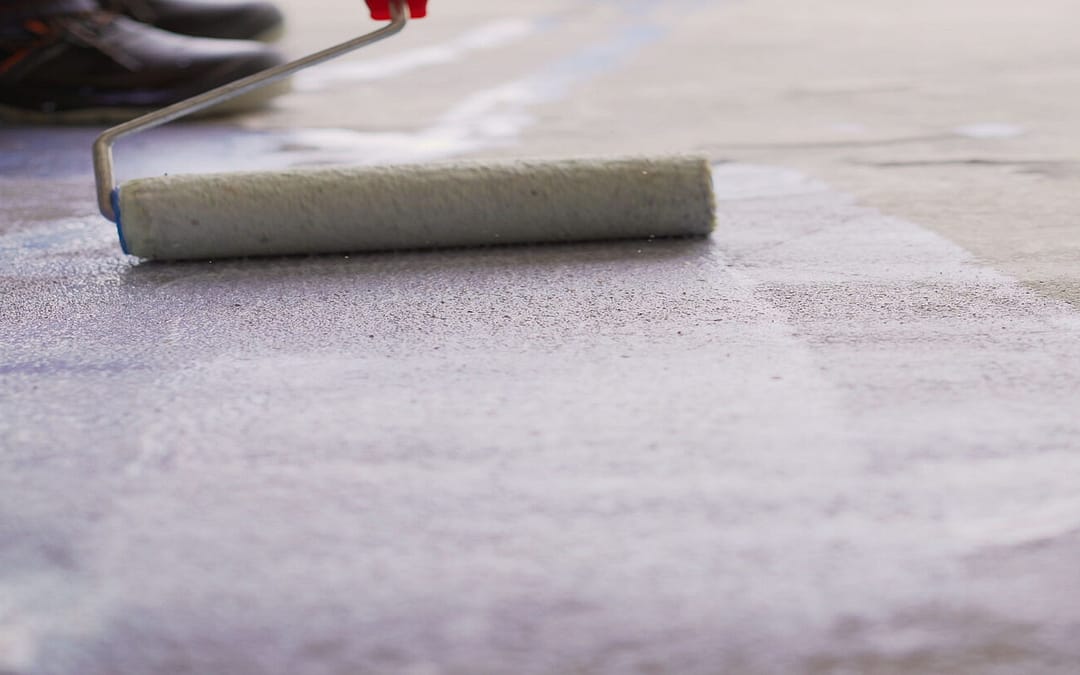Priming concrete is the all-important third step when painting concrete – right behind cleaning thoroughly to remove dirt and efflorescence (the white powder often found on damp concrete) and applying a sealer to inhibit moisture damage.
For exterior and interior projects, applying a specially-formulated primer to concrete prepares the surface, accomplishing several essential functions. Read on to learn more.
Reasons to Use Primer Before Painting Concrete
Why should you prime before painting concrete? Well, the primer:
-
- fills any small gaps or voids, creating a smooth, uniform surface
- works as a bonding agent between the concrete and the paint, assuring proper adhesion to both surfaces
- soaks into cement, protecting it from damage over time
- prolongs the life of the paint or stain
- turns a poor surface for paint into one that accepts paint and topcoats beautifully
How do you know if a concrete surface needs a primer?
Priming is so essential to successful painting outcomes, concrete will almost always need a primer. But to give you an idea, the existing surface needs to be primed before painting if the surface:
-
- is unpainted
- is peeling
- is chipping
- is chalking
- is incompatible with the type of paint being used
Types of Concrete Primers
Primers for concrete are formulated in three ways: alkyd/oil base, acrylic/latex, and tinted shellac. Primers are specialized for both exterior and interior applications.
#1 Acrylic/Latex
Because concrete is porous, a water-based or acrylic primer is more likely to soak into the concrete than an oil-based primer, bonding to the substrate and allowing the paint to grip the surface. These primers will also reduce the dust on interior concrete.
#2 Polyurethane/Epoxy
A type of acrylic/latex primer, these products are not only incredibly strong and heavy-duty, but they can also be made to resist chemical attacks and other nasty work environments in commercial or industrial work areas.
#3 Acrylic Masonry
Specifically designed to protect against lime burn, discoloration, and efflorescence, masonry primers are used on properly cured, unpainted or new concrete. These are great for outdoor applications, too.
#4 Acrylic Block Fill
If you’re working with cinder blocks, this primer is specially formulated for new or unpainted, smooth, or split-face concrete blocks.
Universal Primer
Working on a tight budget? Have a variety of surfaces that need to be primed? You can typically find a universal primer to help with long-term budget efficiency. Universal primer is formulated to work on almost any surface. Nowadays, contractors want to ensure a successful concrete painting job with a primer made specifically for concrete.
For example, the type of primer specified for use with LevelFlor® Rapid Set, a cement-based, self-leveling underlayment (SLU) that can be used both indoors and out, is Rapid Set® Acrylic Primer or Rapid Set TRU Epoxy Primer (TXP). These products are formulated to seal the LevelFlor layer. This reduces the number of pinholes or bubbles caused by trapped air, mitigating the surface, reducing water loss, and increasing topcoat adhesion.
Looking for Primer, Paint, or Concrete Equipment? Reach out Today!
Runyon Surface Prep provides concrete equipment for rent or purchase nationwide and beyond. From paint and primer to ride-on power trowels, we cover every step of the surface installation process.
Give us a call or send us a message online. You can also check out this blog post on how to paint concrete floors.
